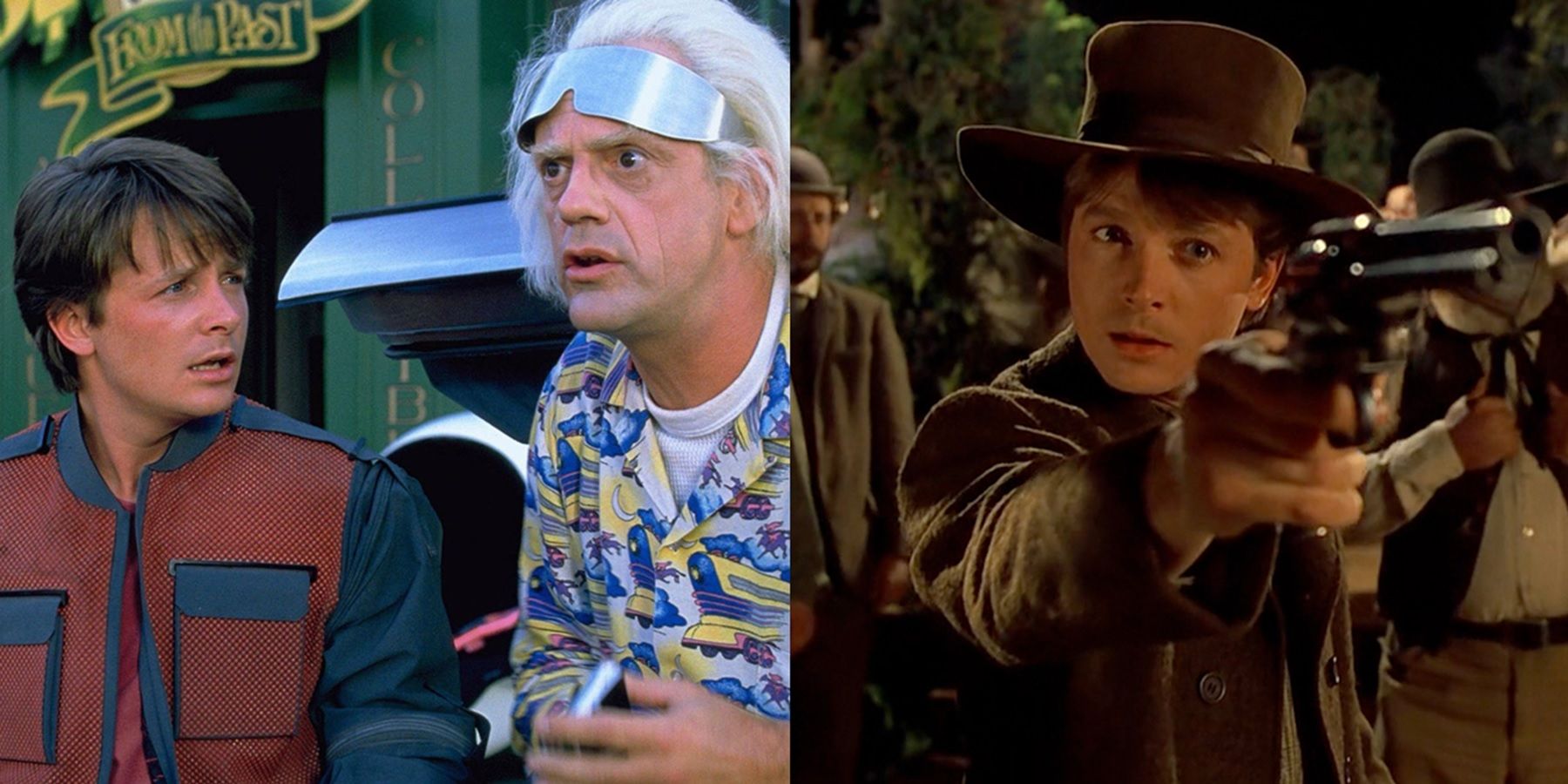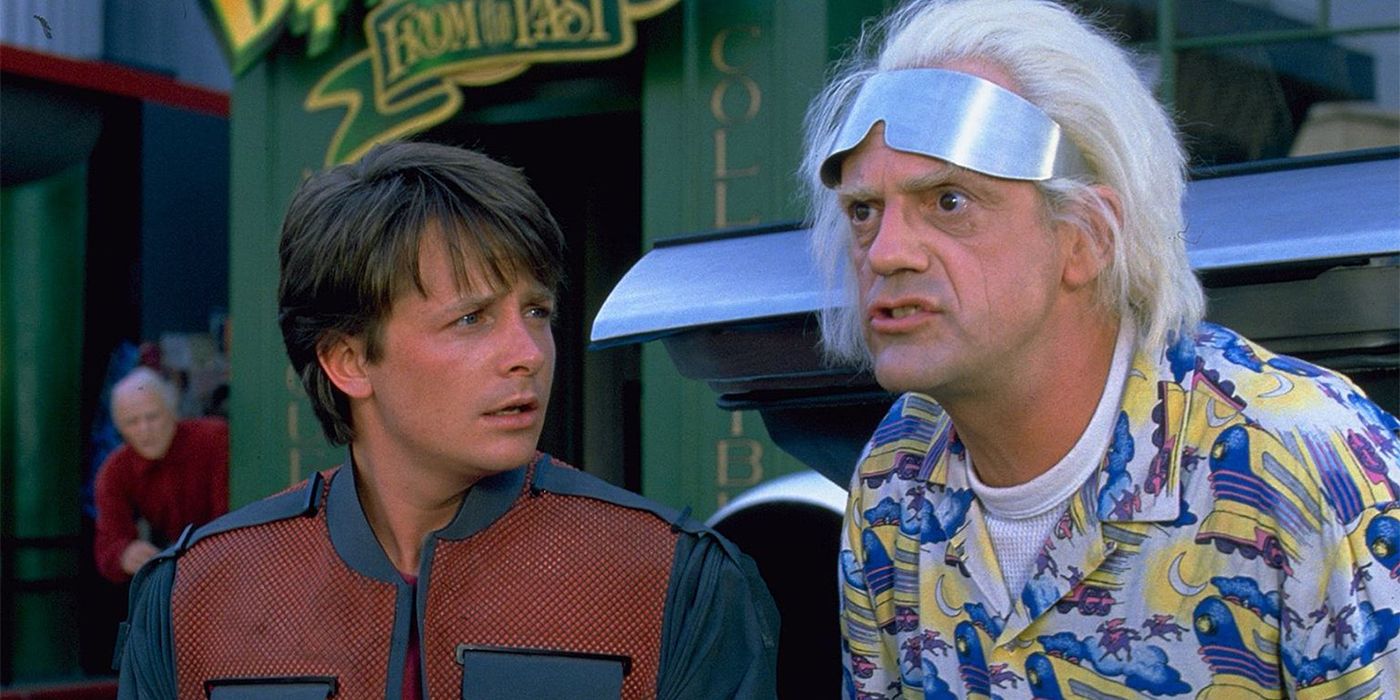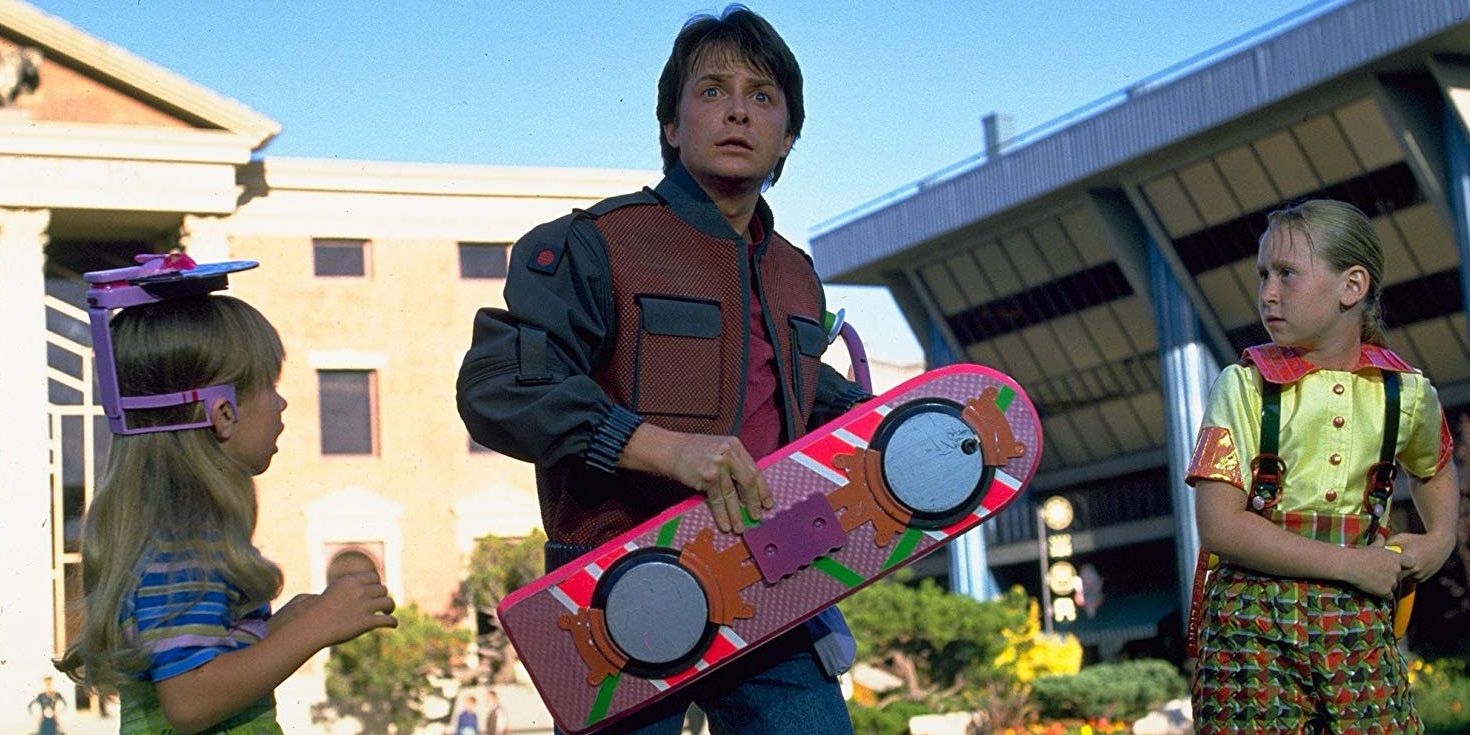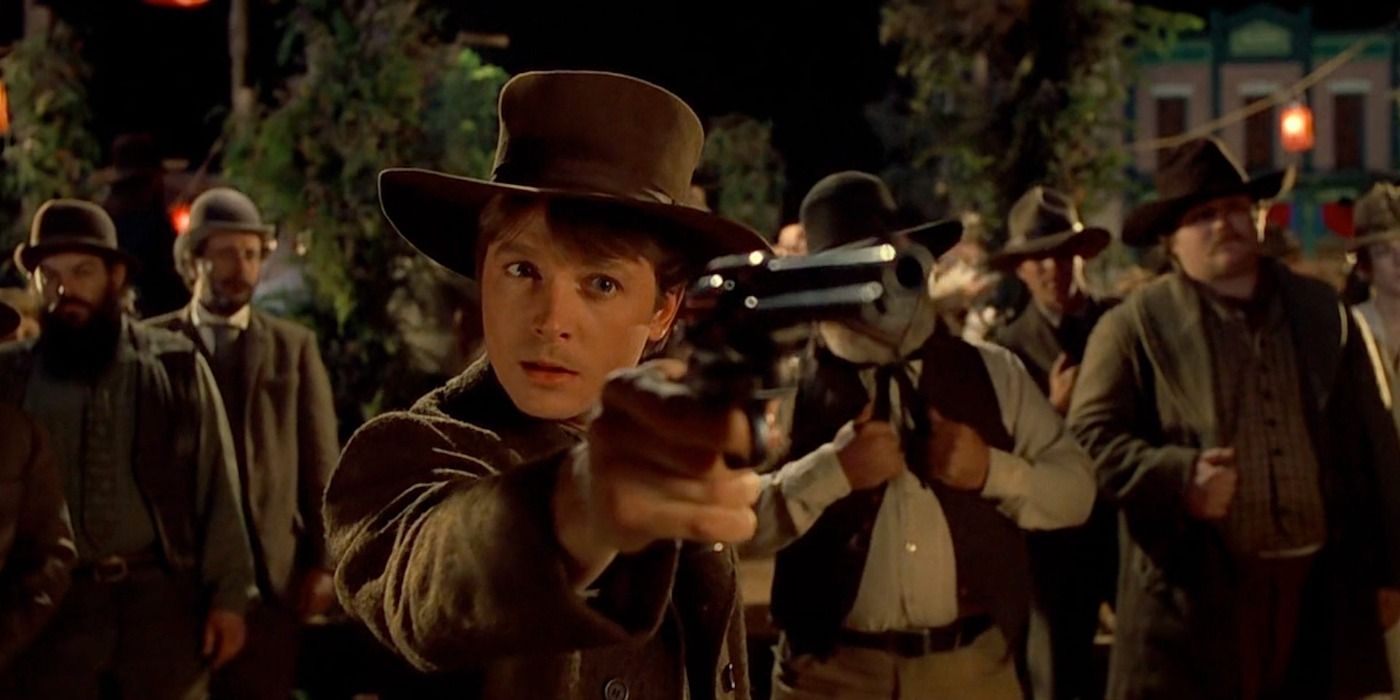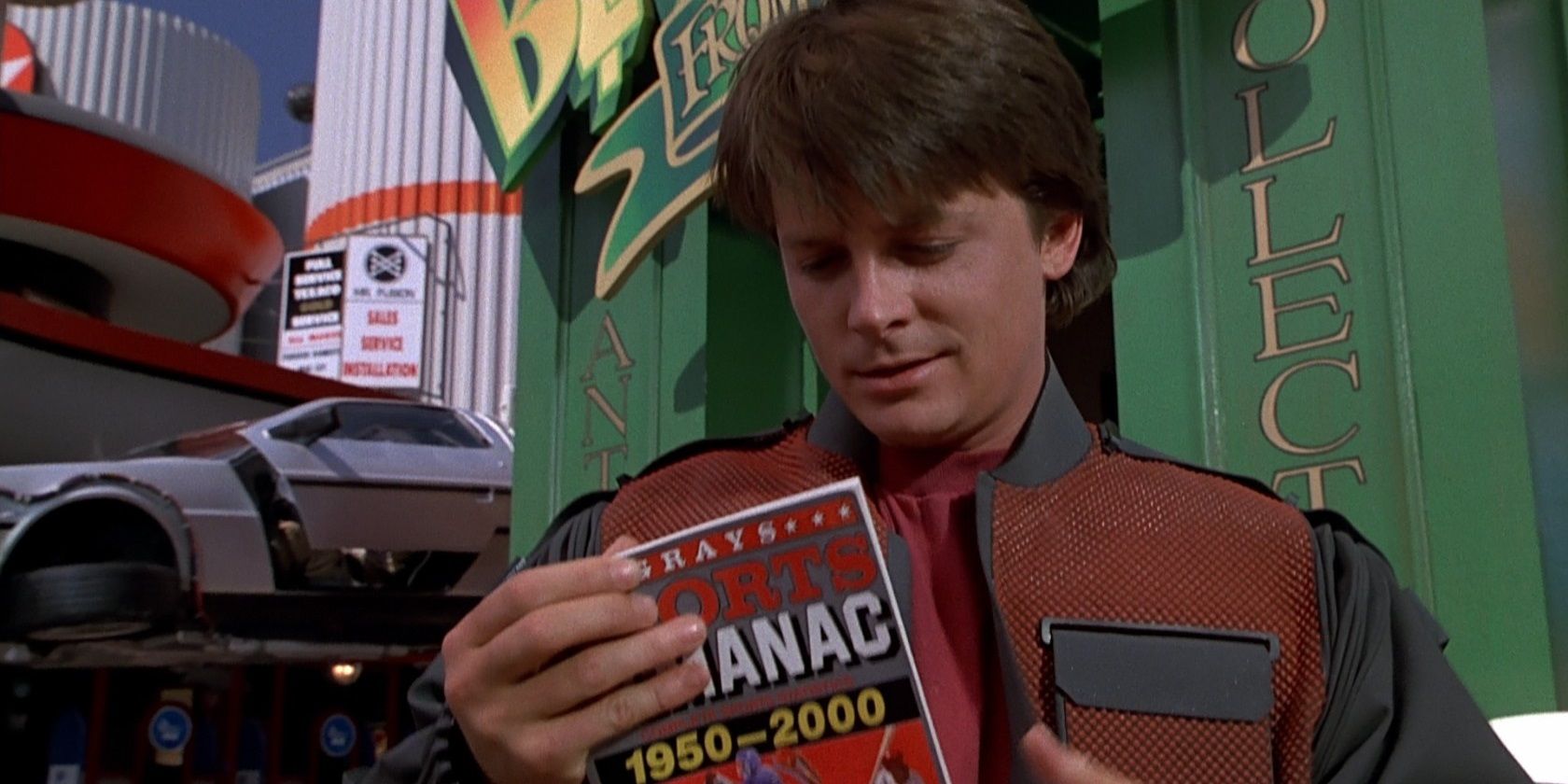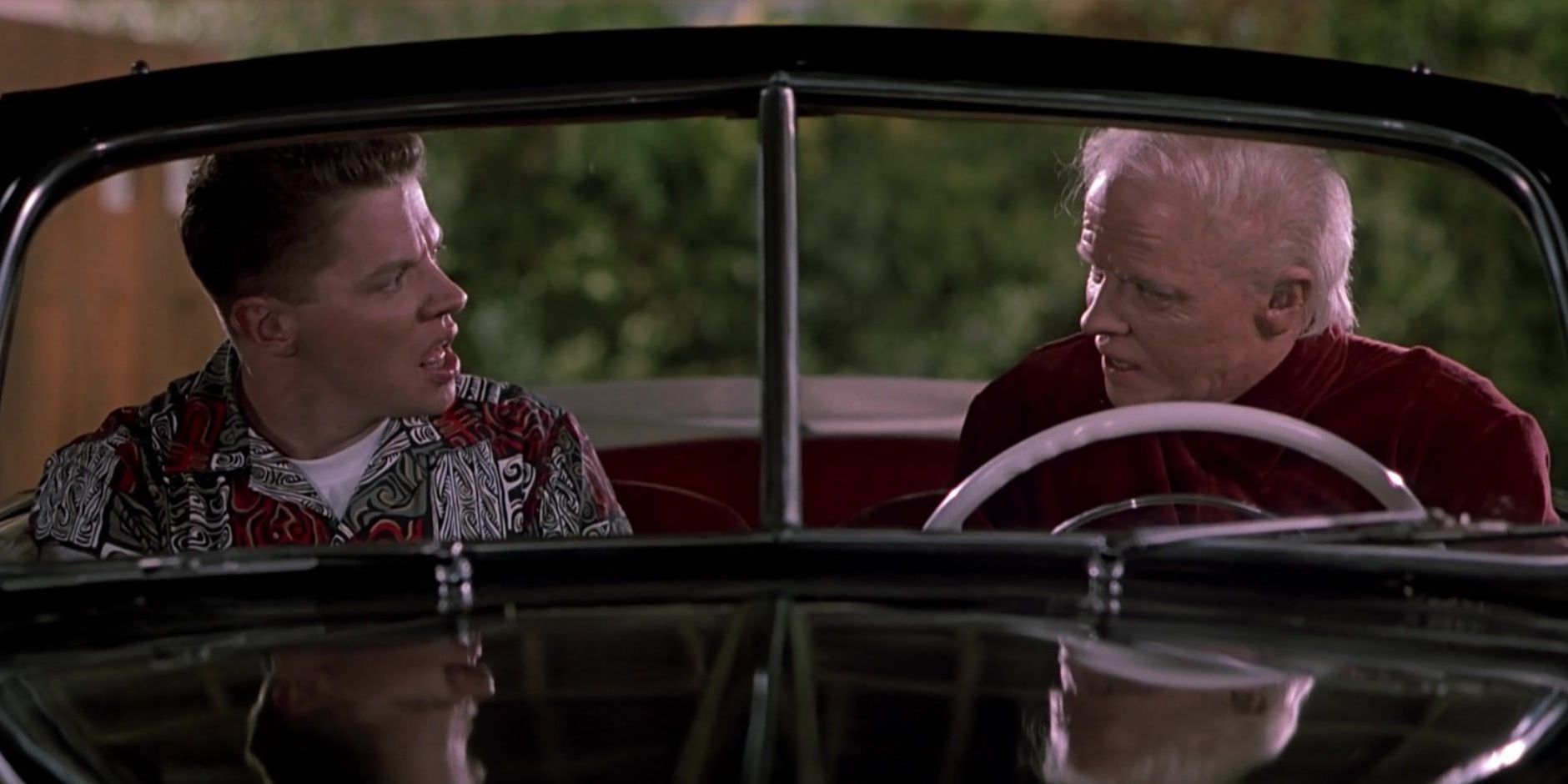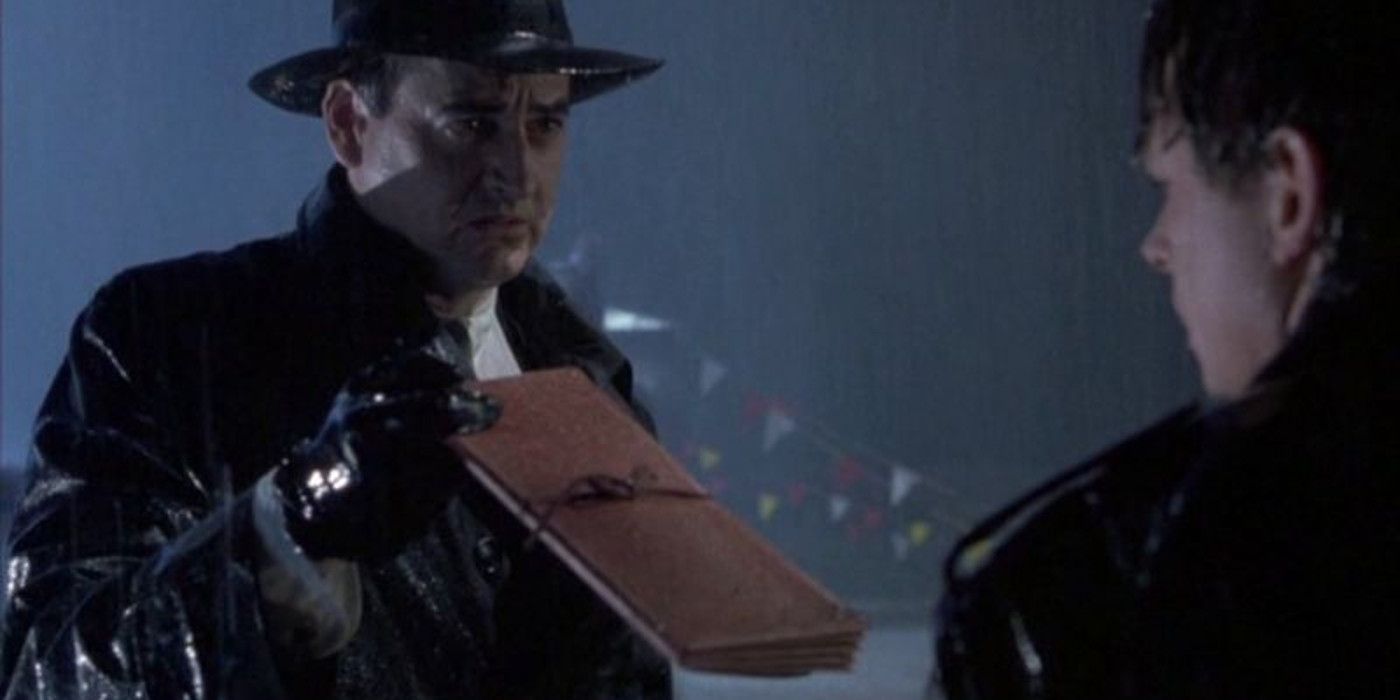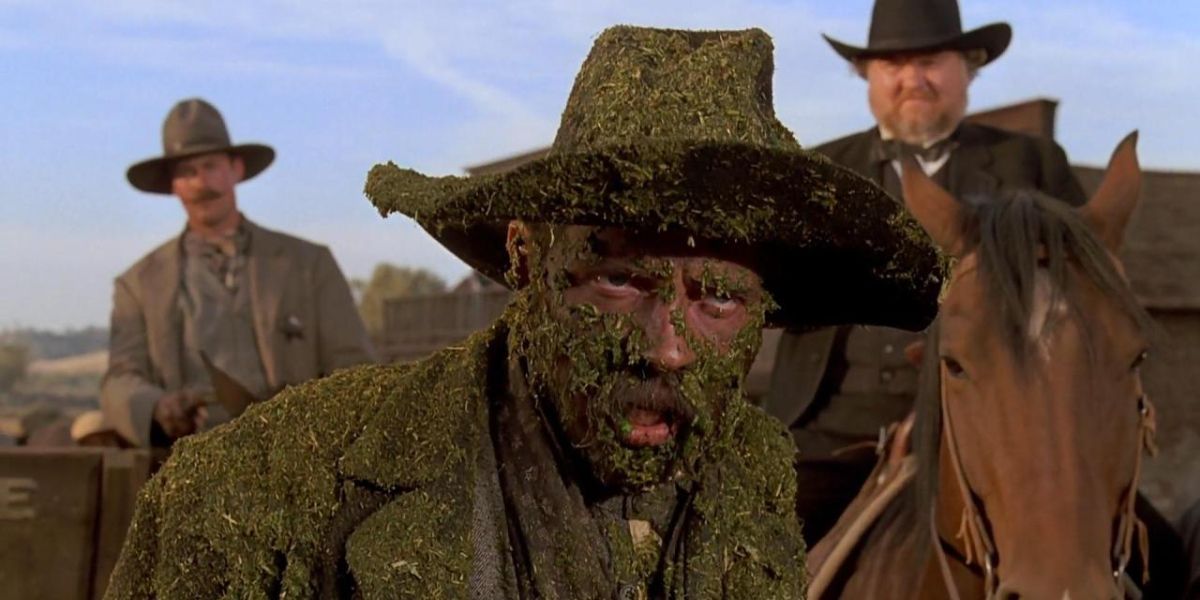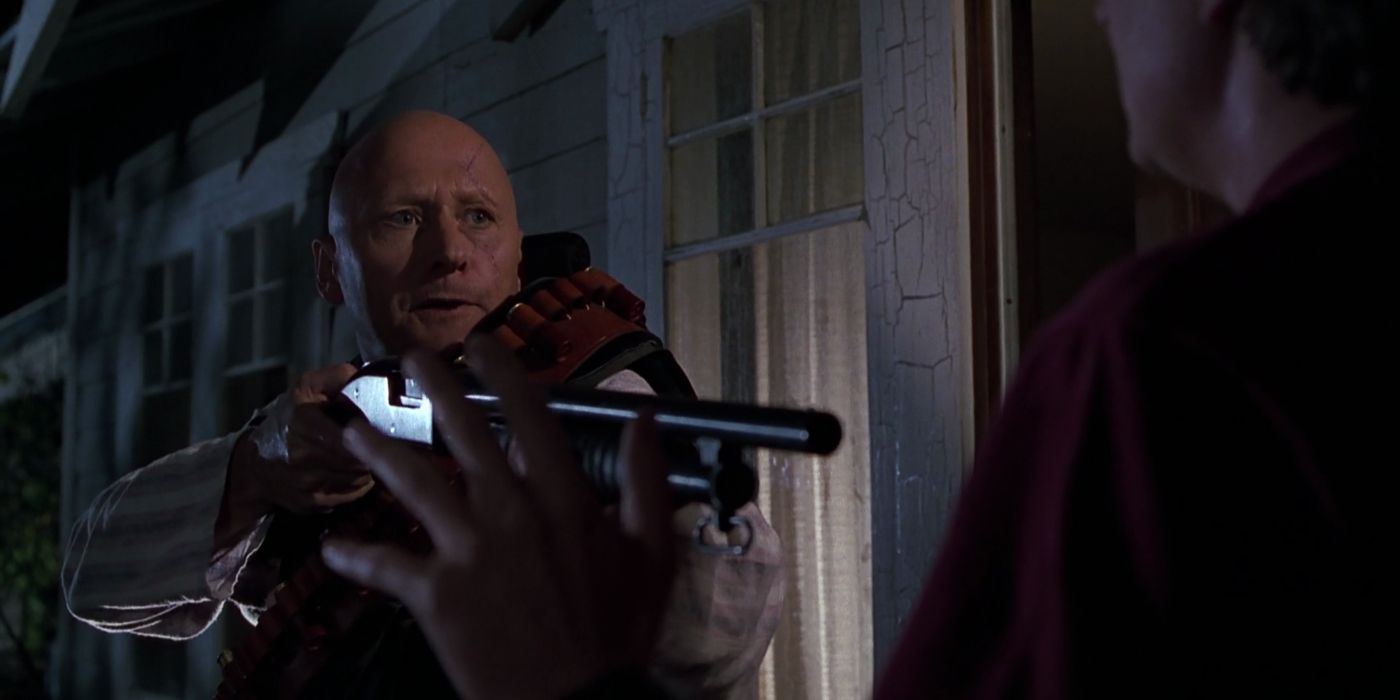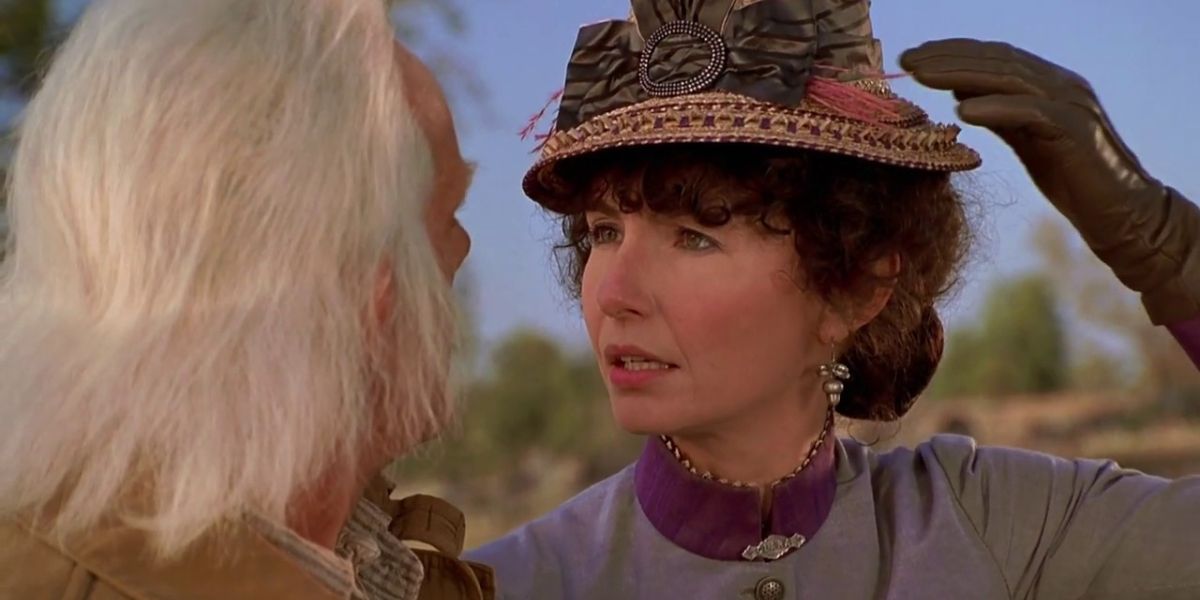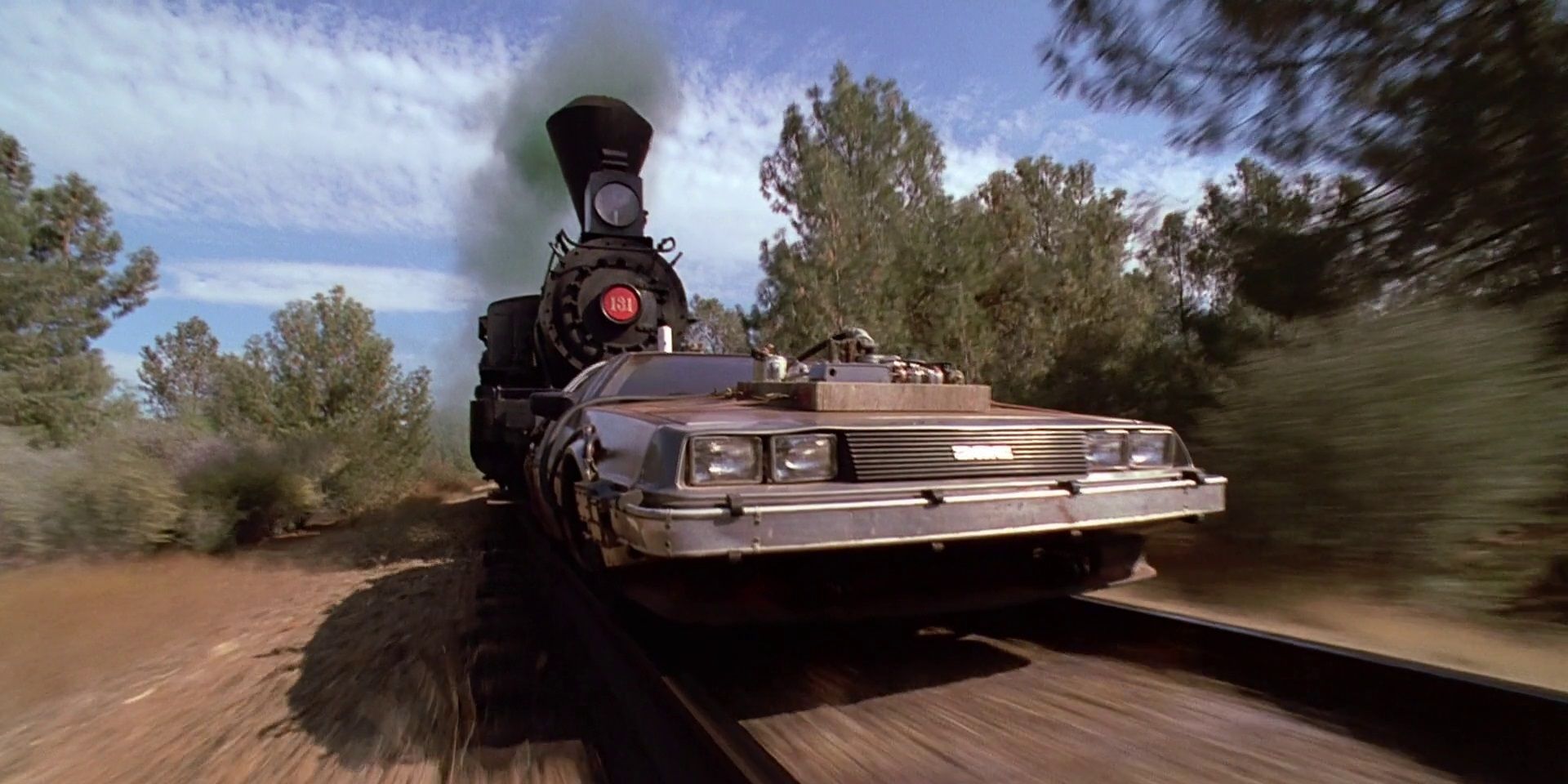After the runaway success of his time-travel comedy Back to the Future, Robert Zemeckis followed up its cliffhanger ending with two back-to-back sequels that continued Doc (Christoper Lloyd) and Marty’s (Michael J. Fox) journey and rounded out the trilogy as a whole. While Parts II and III of the Back to the Future trilogy are nowhere near as highly acclaimed as the 1985 original, they still hold up today as the conclusion of the story.
From Michael J. Fox and Christopher Lloyd’s hilarious chemistry to the subversive turn into the Old West era, there are plenty of timeless elements that make Back to the Future Parts II and III a pair of underrated sequels.
Michael J. Fox And Christopher Lloyd’s Chemistry Remained Just As Strong
In some sequels, the returning cast members phone in their performances to fulfill a contractual obligation, but Michael J. Fox and Christopher Lloyd remained just as committed to the roles of Marty McFly and Doc Brown all the way to the end of the Back to the Future trilogy.
Fox and Lloyd’s palpable on-screen chemistry helped to patch over any questions of why an elderly scientist is friends with a high schooler because their friendship rang true. Although there were plenty of actors considered for the roles for Doc and Marty, Back to the Future fans would agree that they can't imagine anyone else in the roles. This timeless dynamic carried through the movie’s two sequels.
Part II’s Hilariously Far-Fetched Vision Of The Future Hasn’t Aged (Even After The Real 2015)
2015 has come and gone, but the opening scenes of Back to the Future Part II still present a hilariously far-fetched speculative vision of the future. Zemeckis and co. knew they couldn’t accurately predict the future, so they went the other way and came up with the wildest future imaginable.
Marty wandering bewildered through the Hill Valley of 2015 as a fish out of water has a fun parallel with a similar shot when he first arrived in the Hill Valley of 1955 in the original movie.
The Western Setting Of Part III Puts A Fresh Spin On The Familiar Formula
Doc Brown being flung back into 1885 at the end of Part II set up Part III as a full-blown western. Once again, in the threequel, Doc and Marty are trying to figure out a way to power the time machine long before the necessary technology will be perfected.
But incorporating the tropes of a whole new genre makes the threequel feel fresh and subversive. Back to the Future Part III has all the hallmarks and tropes of a classic western: a gun duel, a brawl in a saloon, even a train robbery. It drastically distanced Part III from its predecessors and made it feel like its own movie.
The Almanac Is A Classic MacGuffin
The sports almanac in Back to the Future Part II is one of the most iconic MacGuffins of all time. A book containing decades of results for future sports games getting into the wrong hands is a brilliant conflict for a time travel movie. The surprisingly dark portrayal of the alternative Biff-ruled 1985 Hill Valley makes the almanac symbolize the erosion of civil order in the high-stakes final act.
Marty has to chase the book all over town. First, it’s in Biff’s pocket, then it’s on Strickland’s desk, then there’s a classic all-is-lost moment when Marty finally seizes the book and finds that Biff has just been using the almanac’s dust jacket to cover up an adult magazine. In the finale, he has to chase the real almanac in the back of a moving car. Zemeckis creates a sense of edge-of-your-seat tension throughout the whole almanac-chasing finale.
The Groundbreaking Visual Effects
Some of the visual effects in the first Back to the Future movie haven’t aged particularly well, like Marty holding his hand right in front of his face and watching it fade away, but ILM pioneered brand-new VFX technologies for Back to the Future Part II.
The effects team used a VistaGlide motion control camera and digital compositing to allow the actors to play multiple characters on-screen at once. Two-shots of the younger and older versions of characters like Biff and Doc Brown are still just as seamless and convincing today (and certainly ahead of its time).
Part II Has One Of The Most Iconic Cliffhanger Endings Of All Time
Before the definitive conclusion of Back to the Future Part III, the trilogy was marked by its mind-blowing cliffhanger endings. The final scene of Part II, in which Doc disappears out of the sky and Marty receives a 70-year-old letter saying he’s in the Old West, is even more tantalizing than the first movie’s “Where we’re going, we don’t need roads” stinger.
Since the sequels were shot back-to-back, Zemeckis was able to tease the audience with the trailer for Part III in the end credits of Part II, so the cliffhanger doesn’t feel empty or aimless – the filmmakers actually had a plan.
Thomas F. Wilson Shines As Tannens Throughout History
After making a timeless villain out of Biff in the first Back to the Future movie, Thomas F. Wilson shined in the roles of various other Tannens throughout history in the sequels: Griff Tannen, Gertrude Tannen, Old Man Biff, Buford “Mad-Dog” Tannen.
Wilson brought the same hypermasculinity that he brought to Biff to all the other Tannens, but made a few subtle differences that make them feel like separate characters. The younger Griff is even more entitled than his grandpa, while notorious gunslinger Mad-Dog is more overtly violent.
The Dystopian Alternate 1985 Is Still Haunting Today
When Doc and Marty return to what they think is home, they find that 1985 is a lot different than how they remember it. A different family is living in Marty’s house, the city is a crime-ridden cesspool filled with bikers and killers, and the centerpiece is a giant casino owned by a now-rich Biff Tannen.
More than three decades later, Zemeckis’ uncompromising depiction of the dark, dystopian alternate 1985 that Marty desperately wants to undo is still shocking.
Lloyd’s Chemistry With Mary Steenburgen Made For The Trilogy’s Best Love Story
Marty and Jennifer’s romantic arc was impacted by the recasting of Jennifer. George and Lorraine’s new how-we-met story is the crux of the 1985 original, but it was presented more as an external conflict for the heroes than a straightforward love story. As a result, Back to the Future Part III has the franchise’s best romance.
Falling in love brought all-new angles to the Doc Brown character and gave his life a purpose beyond scientific discovery, and Christopher Lloyd shared impeccable chemistry with Mary Steenburgen.
The Trilogy Holds Together As A Complete Work
The most notable thing about the sequels to Back to the Future is that, unlike a lot of sequels, they don’t just rehash the first movie (although the second one does threaten to undo its plot). Since Zemeckis keeps the story moving forward, exploring new facets of the characters and new problems with the spacetime continuum, Back to the Future feels like a complete trilogy that builds to a definitive conclusion.
Some “trilogies” are just one successful movie followed by two forced sequels, like The Hangover trilogy, but the Back to the Future sequels add enough to the characters and the narrative to feel like necessary follow-ups to the original.

